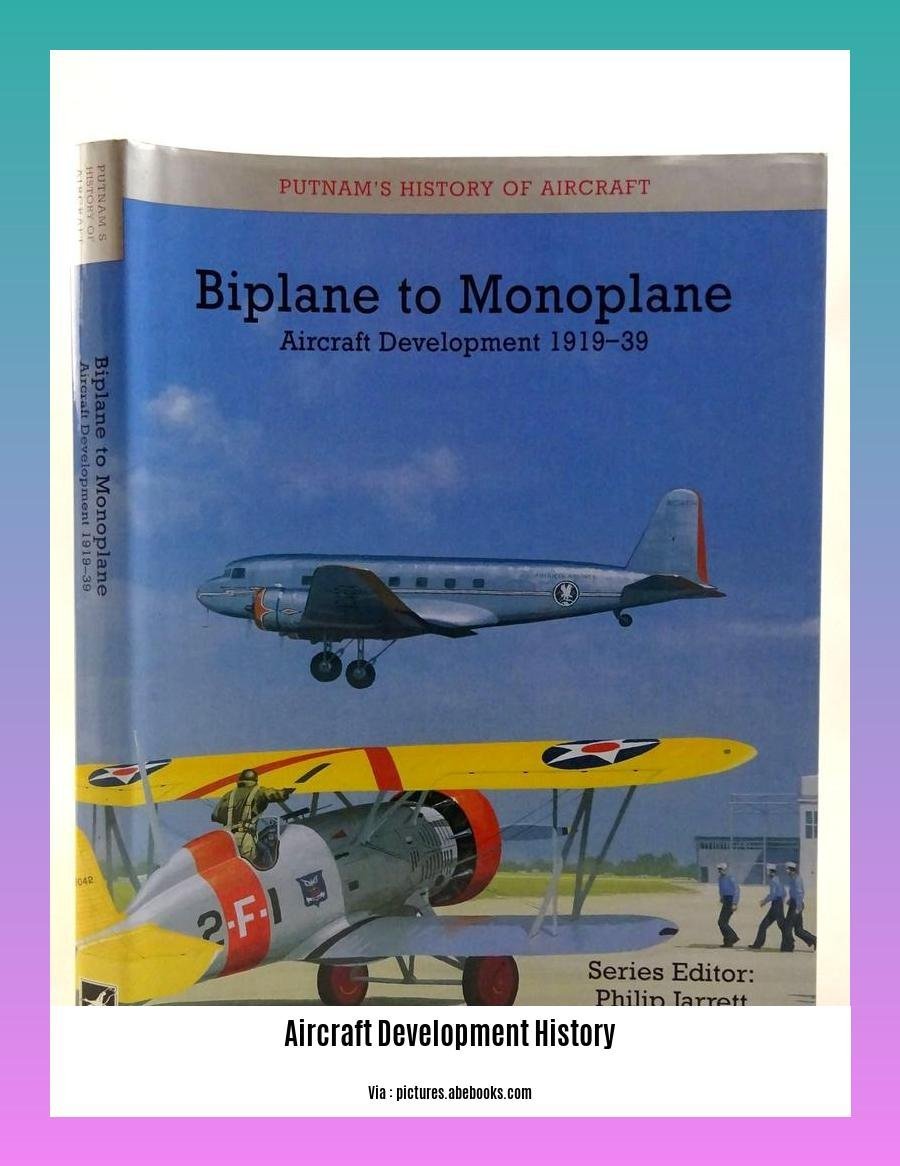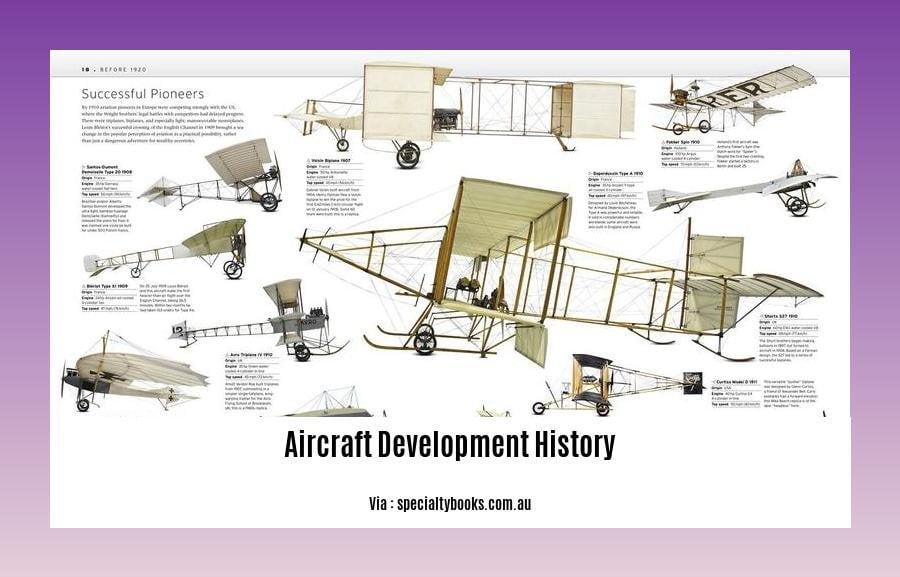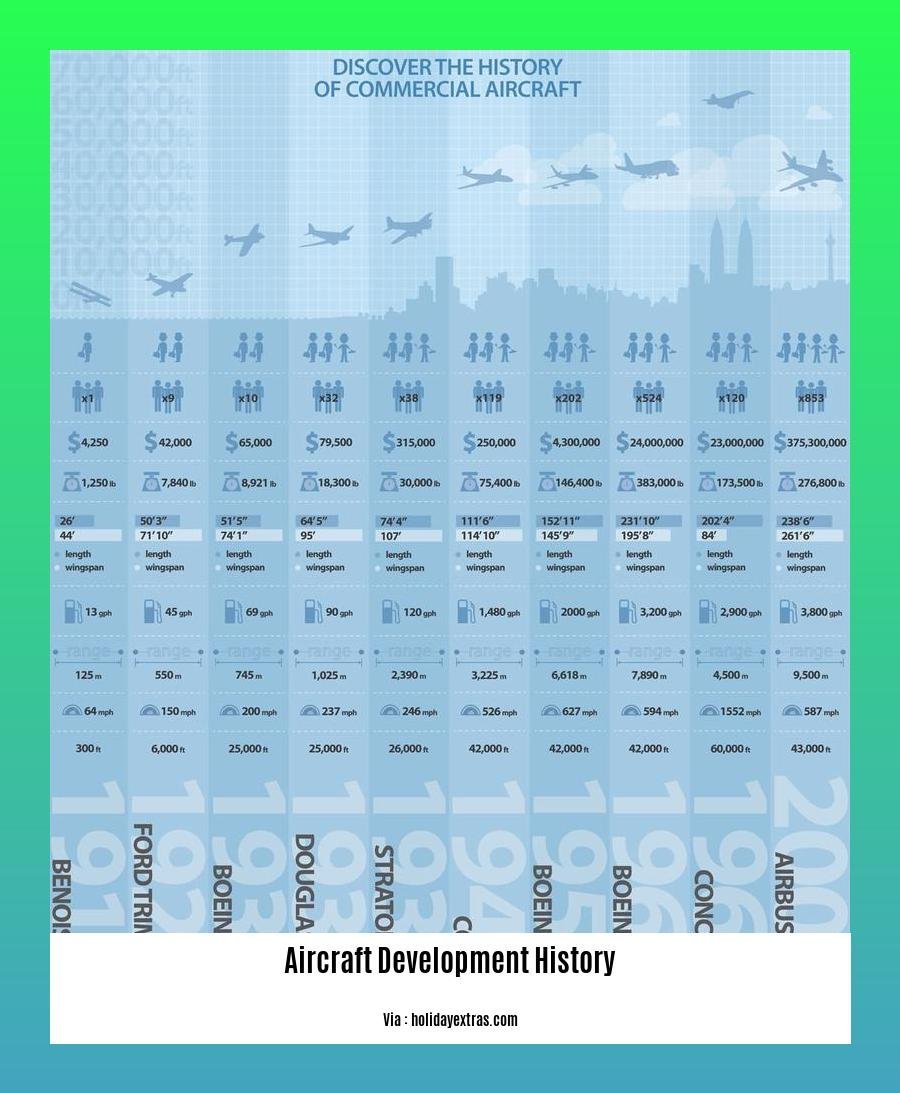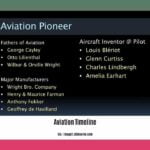Embark on an extraordinary journey through the annals of aviation history in [A Journey Through Aircraft Development History]. Trace the evolution of aircraft technology, from its humble beginnings to the marvels of modern aviation. Explore the pivotal advancements that have transformed the skies, shaping our understanding of flight and connecting the world like never before.
Key Takeaways:
- Wilbur and Orville Wright’s initial aircraft designs began in 1899.
- The Wright brothers successfully conducted the first manned flight in 1903.
- Airplanes were first utilized in combat during World War I for reconnaissance and bombing.
- Post-war advancements saw rapid improvements in aircraft design and performance, including the invention of the turbojet engine.
- Mid-20th century jet airliners transformed air travel, enhancing speed, convenience, and accessibility.
- Advanced avionics, composite materials, and fuel-efficient engines have significantly boosted aircraft capabilities and safety in the modern era.
Aircraft Development History

My fellow aviation enthusiasts, prepare for a captivating odyssey through aircraft development history, a saga of human ingenuity that has shaped our skies.
Early Aspirations and the Wright Legacy
From the dreams of ancient civilizations to Leonardo da Vinci’s groundbreaking sketches, the desire to conquer the heavens has ignited the human spirit for centuries. But it was in 1903 that history took flight when the Wright brothers soared to success at Kitty Hawk. Their audacity forever etched them into the annals of aviation.
Wartime Innovations and Commercial Soaring
The horrors of World War I propelled aircraft development history forward at an unprecedented pace. Airplanes transformed into formidable weapons, testing the limits of speed, maneuverability, and destructive power. Post-war, commercial aviation took wing, connecting continents and shrinking distances.
The Jet Age and Beyond
The advent of jet engines in World War II heralded the jet age, bringing supersonic travel and revolutionizing military and civilian aviation. The post-war era saw fierce competition during the Space Race, driving the boundaries of aerospace technology.
Modern Marvels and the Future of Flight
Contemporary aircraft boast advanced avionics, composite materials, and fuel-efficient engines, enhancing safety, efficiency, and environmental sustainability. The future holds promise for even more remarkable innovations, such as electric and hybrid-electric propulsion systems.
Impact on Humanity
Aircraft development history is a story of progress, connecting cultures, enabling exploration, and safeguarding our skies. From wartime maneuvers to commercial convenience, aircraft have become an indispensable part of our world. As we continue to push the boundaries of aviation, we eagerly anticipate the next chapters in this thrilling journey.
If you are an aviation fan, you should check out our history of aviation section, where we will blow your mind with lots of interesting facts. What started as a dream of flying like a bird is now a major means of transportation to almost every part of the globe.
If you are more interested in the exact moments in history that shaped this incredible industry, visit our aviation timeline to explore the historical events that made aviation the way it is today.
And lastly, for those intensely interested in knowing how everything started, do read our history of flight article, which will let you know about the very first attempts of humans to fly.
World War I and Aviation Advances

Aviation in Warfare Takes Off
World War I marked the dawn of aviation’s military debut, with aircraft soaring as scouts, and evolving into formidable fighters. As aerial combat intensified, the skies witnessed a surge of innovation. Biplanes gained dominance, equipped with synchronized machine guns that fired through the propeller’s arc.
Bomber and Transport Advancements
The conflict fueled the development of bombers, transforming them into devastating tools of warfare. Simultaneously, transport planes emerged, enabling the rapid movement of troops and supplies, a capability that would prove pivotal in future conflicts.
Training Soars to New Heights
Recognizing the importance of skilled aviators, the RFC School of Special Flying in England pioneered advanced training techniques, setting the stage for future aviation education.
Zeppelin’s Rise and Fall
German airships, known as Zeppelins, played a significant role in World War I. They conducted reconnaissance missions and carried out bombing raids. However, their effectiveness declined as the war progressed, making them vulnerable to anti-aircraft fire and fighter attacks.
Key Takeaways:
- World War I propelled aviation into the realm of warfare.
- Combat aircraft evolved rapidly, introducing synchronized machine guns and maneuverable biplanes.
- Bombers and transport planes emerged, expanding aviation’s capabilities.
- Training techniques for aviators underwent significant advancements.
- German airships played a notable role in the conflict but faced increasing vulnerabilities.
Citation:
Interwar Period and Commercial Aviation
During the Interwar Period and Commercial Aviation, the world saw a surge in commercial aviation as the development of larger and more efficient airplanes took flight.
- The rise of commercial airlines connected continents and made air travel accessible to a broader audience.
- Helium replaced hydrogen as a lifting gas in American airships, enhancing safety and reducing the risk of explosions.
- Cantilever-wing monoplanes took to the skies, thanks to increased aero engine power and improved aerodynamic efficiency.
- Notable civil aviation firsts were achieved during this period, including long-distance flights by aviation pioneers.
Key Takeaways:
- The rise of commercial aviation connected the world and made air travel more accessible.
- Technological advancements led to larger and more efficient airplanes.
- Helium replaced hydrogen as the lifting gas in American airships, improving safety.
- Monoplanes became widely adopted due to increased engine power and aerodynamic efficiency.
- Notable civil aviation achievements marked the period, showcasing the growing capabilities of aircraft.
World War II and the Jet Age
As tensions escalated in the 1930s, the development of aircraft became intertwined with the looming conflict. World War II served as a catalyst for the rapid advancement of aviation technology.
The war demanded faster and more maneuverable fighter planes, leading to the development of jet engines. The German Me 262 became the first operational jet fighter, introducing a new era of high-speed aerial combat.
Jet technology revolutionized aviation, enabling aircraft to break the sound barrier and explore supersonic flight. The post-war era saw the widespread adoption of jets in commercial aviation, significantly reducing travel times and opening up international connections.
Key Takeaways:
- World War II accelerated the development of jet engines and high-performance aircraft.
- Jet technology enabled faster and more efficient flight, transforming air warfare and commercial aviation.
- The post-war era witnessed the transition from propeller-driven aircraft to jet airliners.
Most Relevant URL Source:
- The Jet Age
FAQ
Q1: When did the first successful manned flight occur?
Q2: How did World War I influence the advancement of aircraft technology?
Q3: What were the key developments in aviation during the interwar period?
Q4: When did the “Jet Age” begin?
Q5: What was the first operational jet fighter?
- Unlock Water’s Symbolism: A Cross-Cultural Exploration - April 20, 2025
- Identify Black and White Snakes: Venomous or Harmless? - April 20, 2025
- Unlocking Potential: Origins High School’s NYC Story - April 20, 2025















